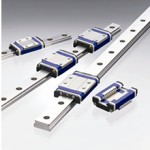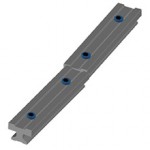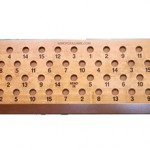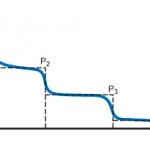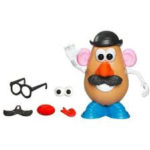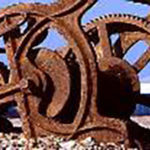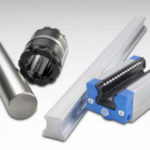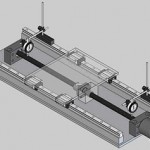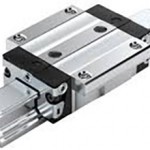Updated 2021 ⚙️ As we explain in this article, miniature rails are more than just smaller versions of standard profiled rails. Profiled rails have high load-carrying capacity for their size. But when smooth, precise motion is needed and the load being moved is not very high, they can be overkill for the application. That’s why […]
linear guide
How to calculate hole spacing for joined linear guide rails
There are several reasons that a linear guide rail may be supplied in multiple sections rather than in one piece: the overall length is longer than the maximum offered by the manufacturer, the machine design or other space constraints don’t allow installation of a single piece in the length needed, or the risk of damage […]
How to calculate hole spacing for linear guide rails
Profiled linear guides—whether profiled rails, cam roller guides, shaft support rails, or plain bearing guides—are typically manufactured with evenly spaced mounting holes that allow them to be secured to a machine base or work surface. For rigidity and integrity of the rail, there’s often a minimum distance, specified by the manufacturer, that must be maintained […]
How to calculate combined static load
Static load capacity is an important factor in linear bearing selection. While dynamic load capacity is used to calculate bearing life, static load capacity indicates how much load the bearing can withstand before permanent damage occurs to the balls and/or the raceways. Even when they’re not moving, linear guides often experience a combination of both […]
How to calculate mean equivalent dynamic load
It’s rare in linear motion for a guide or ball screw to carry the same load throughout its move cycle. Even in simple pick-and-place applications, the load will be higher in one direction (the pick and carry phase) than in the other direction (the place and return phase). But even more common is for a […]
Seven Interchange Tools for Linear Guides and Bearings
In linear motion, there are few types of components that are truly interchangeable—that is, where a product from one manufacturer is a dimensional and technical replacement with a product from another manufacturer. In fact, only linear ball bearings (bushings) and shafts are commonly interchangeable between manufacturers, with very few dimensional and technical differences. Not only […]
Bearing lubricant: Choosing between grease and oil
Lack of bearing lubrication is generally regarded as the number one cause of linear-bearing failure. For recirculating linear bearings such as profiled rail guides and ball screws, lubrication separates the bearings (ball or roller) from the raceways, minimizes friction and wear, dissipates heat, and prevents corrosion. It also promotes smooth running of the seals and […]
Round shaft or profiled rail for linear motion? How to choose
Updated May 2019 || When designing a linear motion system, engineers have two primary choices in recirculating linear guides — round shaft or profiled rail. Choosing the wrong linear motion system can be a costly mistake, resulting in design or structural changes, poor machine performance, or oversized components with higher costs. Although both round shafts and […]
Don’t ignore these three things when mounting linear guides
Linear rail guides are designed for applications that call for precise motion with high load-bearing capability. But improper mounting can add unnecessary loads, reduce life, and undermine the inherent travel accuracy of the linear guide system. Understanding and following the three mounting specifications described below will help ensure your installation achieves the desired accuracy and doesn’t succumb […]
Breaking down linear bearing construction
As with most complex products or systems, specifying and applying profiled rail bearings doesn’t require that you know every detail of linear bearing construction. But having a basic understanding of the various design types and geometries can help you choose a product that enhances, rather than detracts from, the performance of your machine—especially in applications that […]

